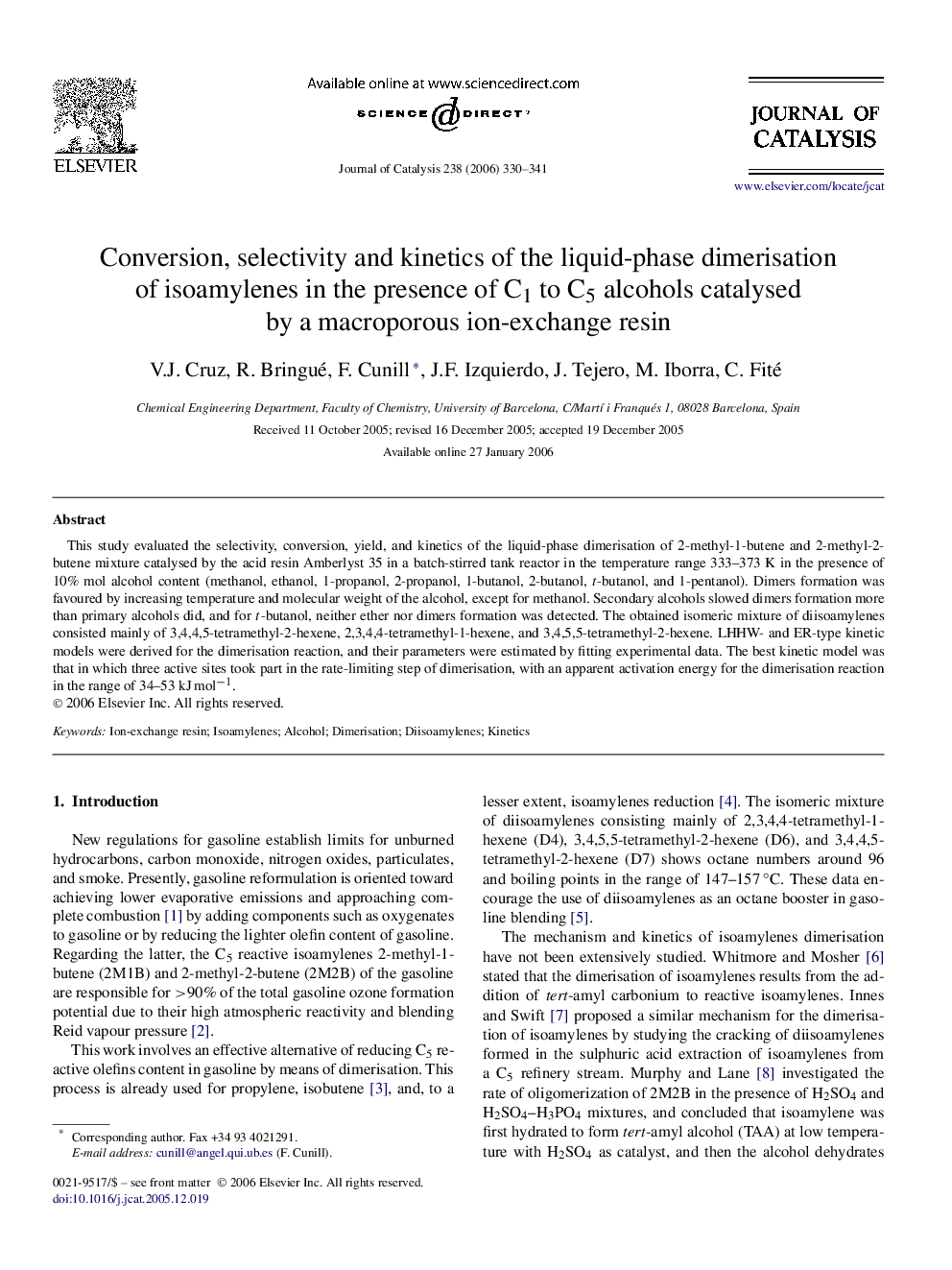| Article ID | Journal | Published Year | Pages | File Type |
|---|---|---|---|---|
| 63221 | Journal of Catalysis | 2006 | 12 Pages |
This study evaluated the selectivity, conversion, yield, and kinetics of the liquid-phase dimerisation of 2-methyl-1-butene and 2-methyl-2-butene mixture catalysed by the acid resin Amberlyst 35 in a batch-stirred tank reactor in the temperature range 333–373 K in the presence of 10% mol alcohol content (methanol, ethanol, 1-propanol, 2-propanol, 1-butanol, 2-butanol, t-butanol, and 1-pentanol). Dimers formation was favoured by increasing temperature and molecular weight of the alcohol, except for methanol. Secondary alcohols slowed dimers formation more than primary alcohols did, and for t-butanol, neither ether nor dimers formation was detected. The obtained isomeric mixture of diisoamylenes consisted mainly of 3,4,4,5-tetramethyl-2-hexene, 2,3,4,4-tetramethyl-1-hexene, and 3,4,5,5-tetramethyl-2-hexene. LHHW- and ER-type kinetic models were derived for the dimerisation reaction, and their parameters were estimated by fitting experimental data. The best kinetic model was that in which three active sites took part in the rate-limiting step of dimerisation, with an apparent activation energy for the dimerisation reaction in the range of 34–53 kJ mol−1.
